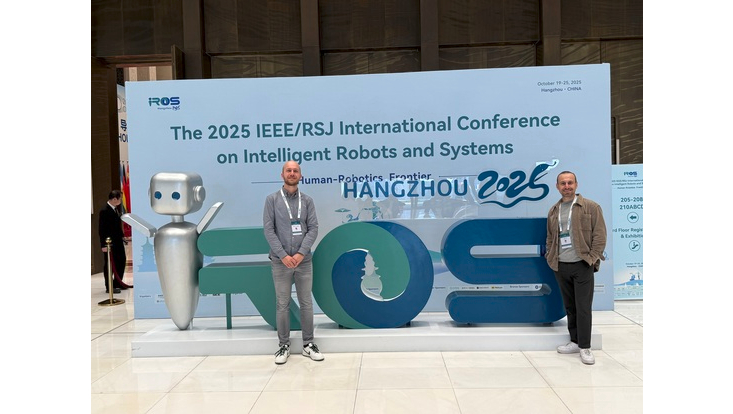Knowledge Technology at ICSR'24
26 November 2024

Our group members Theresa-Pekarek Rosin, Xiaowen Sun and Hassan Ali presented their papers at the ICSR'24 conference in Odense, Denmark. Here is more information about the papers:
Title: A Framework for Adapting Human-Robot Interaction to Diverse User Groups
Authors: Theresa Pekarek Rosin, Vanessa Hassouna, Xiaowen Sun, Luca Krohm, Henri-Leon Kordt, Michael Beetz, Stefan Wermter
Abstract: To facilitate natural and intuitive interactions with diverse user groups in real-world settings, social robots must be capable of addressing the varying requirements and expectations of these groups while adapting their behavior based on user feedback. While previous research often focuses on specific demographics, we present a novel framework for adaptive Human-Robot Interaction (HRI) that tailors interactions to different user groups and enables individual users to modulate interactions through both minor and major interruptions. Our primary contributions include the development of an adaptive, ROS-based HRI framework with an open-source code base. This framework supports natural interactions through advanced speech recognition and voice activity detection, and leverages a large language model (LLM) as a dialogue bridge. We validate the efficiency of our framework through module tests and system trials, demonstrating its high accuracy in age recognition and its robustness to repeated user inputs and plan changes.
Paper #2
Authors: Hassan Ali, Philipp Allgeuer, Stefan Wermter
Abstract: Intention-based Human-Robot Interaction (HRI) systems allow robots to perceive and interpret user actions to proactively interact with humans and adapt to their behavior. Therefore, intention prediction is pivotal in creating a natural interactive collaboration between humans and robots. In this paper, we examine the use of Large Language Models (LLMs) for inferring human intention during a collaborative object categorization task with a physical robot. We introduce a hierarchical approach for interpreting user non-verbal cues, like hand gestures, body poses, and facial expressions and combining them with environment states and user verbal cues captured using an existing Automatic Speech Recognition (ASR) system. Our evaluation demonstrates the potential of LLMs to interpret non-verbal cues and to combine them with their context-understanding capabilities and real-world knowledge to support intention prediction during human-robot interaction.


